-
Engine3.8L Flat-6
-
Power375 HP / 290 LB-FT
-
Transmission6-Speed Manual
-
0-60 Time4 Seconds (est.)
-
DrivetrainRear-Wheel Drive
-
Curb Weight2,500 LBS (est.)
-
Seating2+2
Reimagining An Iconic Sports Car With Some Modern Parts
We first placed our hands on Singer's "reimagined Porsche 911" nearly three years ago when it made its world debut at the Pebble Beach Concours d'Elegance. Shortly thereafter, we caught up with the company's orange prototype for a photo shoot in the Los Angeles basin. While we were both intrigued and impressed with the sports car at the time, full disclosure admits that we were very skeptical about the start-up back in September 2009. Sadly, we've watched this industry shatter far too many dreams.
But Singer has prospered. Very well, it appears.
Rob Dickinson, the creative genius behind the vision, recently invited Autoblog to Singer's headquarters in Southern California's San Fernando Valley for an extended ride in the company's latest offering. After a detailed tour of the facility where we saw other vehicles in production, we dropped into the passenger seat to see what the "Porsche 911 restored by Singer" was all about – only bummed as it was a customer car, meaning we still weren't allowed behind the wheel.
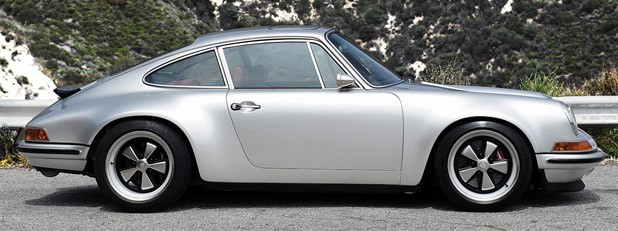
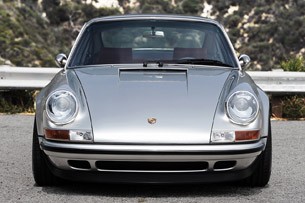
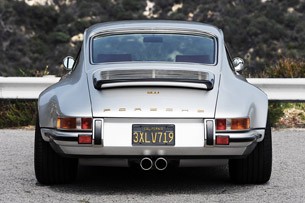
As mentioned, the striking silver vehicle in the pictures is a sold customer car – all Singer restorations are built-to-order. This particular VIN, a 964-series, was stripped and media blasted down to bare metal before being reinforced and strengthened for its next life. The front decklid latch was moved forward, to accept a classic long hood, and the wipers were relocated to their central location on a 993-series (1995-1998) Porsche. The tub was then treated for rust prevention before being primed and meticulously painted (photos don't do it justice).
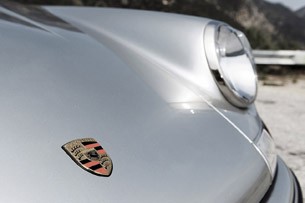
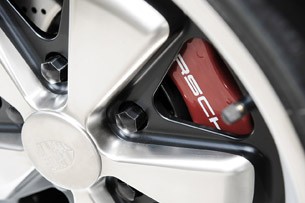
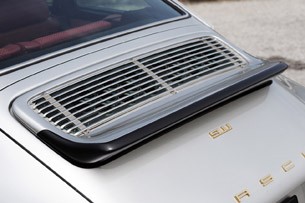
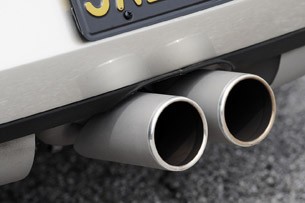
The passenger cabin is retro-styled to recall the interiors of the 60s and 70s and built completely to customer specifications. This particular vehicle had power-operated low-back Recaro bucket seats with red "leatherweave" upholstery. According to Singer, "this technique blends many thin strands of leather into a beautiful tapestry, which reimagines the basketweave vinyl interiors of the period in an updated and luxurious fashion." Porsche used a very similar technique on its limited-edition and very retro 2010 911 Sport Classic. It looks rich and feels stunning to the touch.
Other interior components are covered in the customer's choice of high-grade leather – basketweave, perforated, smooth or diamond quilted. These areas include the sun visors, upper and lower dashboard, door panels and luggage shelf. Some customers even opt for diamond-quilted leather upholstery in the forward luggage compartment, but the owner of this silver car chose durable German weave carpet in matching red. The headliner is perforated vinyl, as would be expected from the factory. The steering wheel is a classic thin-rim three-spoke (380 mm diameter), wrapped in black leather. Customers choose their own audio and infotainment options.
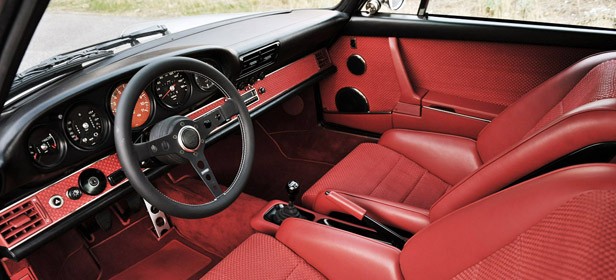
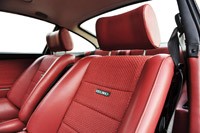
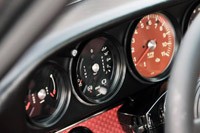
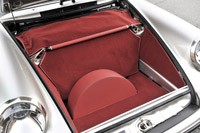
All original switchgear and electronics are new or have been completely disassembled and restored to exceed factory specifications; whether it is the HVAC system (with air conditioning), instrument cluster or even minor components such as the ignition switch. When replacement parts are unavailable or not up to the company's specifications, the team makes new ones - they are generally better than the factory delivered (take a look at the CNC-milled hood struts and strut brace, cut from aluminum and then plated in nickel, as two examples).
Under the skin, standard Singer restorations are fitted with adjustable Bilstein PSS10 dampers, but this customer specified slightly different KW coilovers from KW automotive GmbH. The massive front multi-piston brakes with drilled rotors are stolen from a race-ready Porsche 993 RS, while the rears come from a standard 993 series. ABS is standard, but late-model stability control is not offered. The wheels are period-correct three-piece 17-inch Fuchs wrapped in 225/45-17 tires in the front and 275/40-17 rubber in the rear.
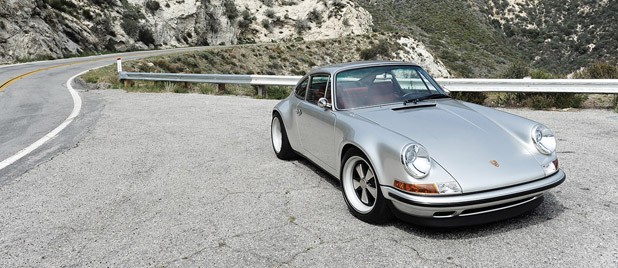
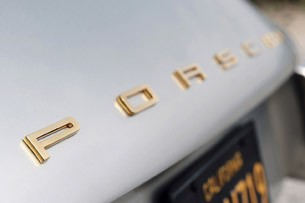
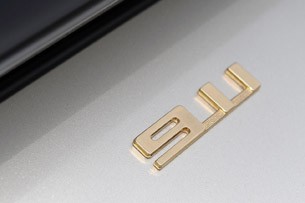
The "standard" car is about $255,000 (the company doesn't consider any of its builds "entry-level"), but bespoke options will likely raise the price higher – Singer can do just about anything.
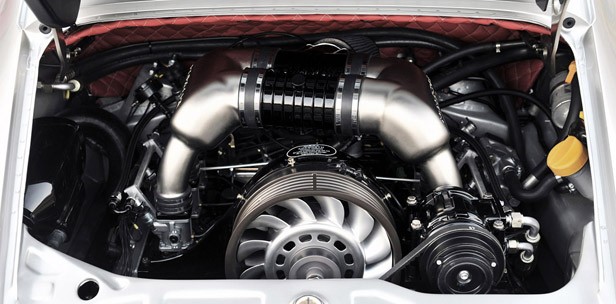
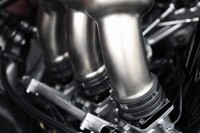
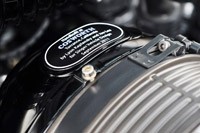
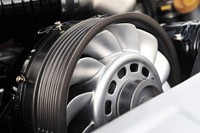
Even though the company has delivered customer cars, they still don't have any standing inventory. Each car is made-to-order and the spectacular silver car in the pictures (our "test ride" vehicle) is awaiting customer delivery. While our insurance will cover the loss, Singer's trickling production schedule didn't want to take a risk – we were relegated to being passengers. Behind the wheel was Mazen Fawaz, an accomplished driver and Singer customer (who also happens to be the driver in this viral video).
The leather Recaro seats with a period-correct appearance are much more comfortable than they look. Mostly supportive to the back and thighs, they don't envelope the shoulder and back as well as today's best sport buckets but are good for a long haul. All of the other touch points, from the doors to the dash, are all classic Porsche 911 (ergonomics hadn't yet become a science).
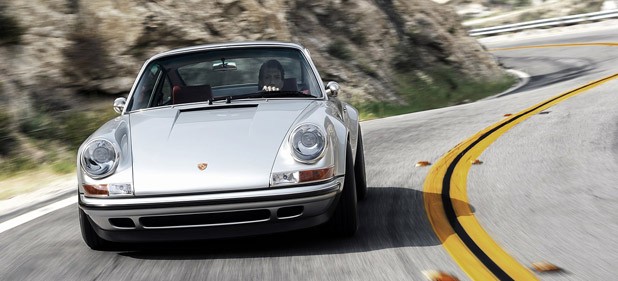
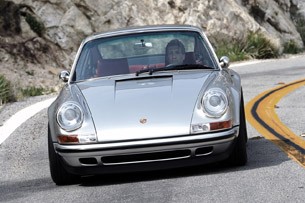
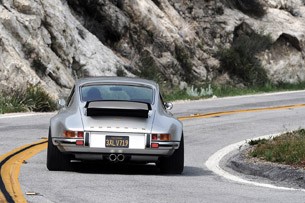
With a twist of the metal key located on the left of the dash, the Costworth-built flat-six spun to life with a soothing but raspy idle. The engine spun with flawless mechanical precision, while the race-tuned exhaust burbled with an aggressively mellow note. Overall, the head-turning sound was aggressive and eager.
Stuck in the right seat, there wasn't much to take in with regards to clutch uptake or shift feel, but Mazen pulled us into traffic seamlessly. We kept a discreet eye on his feet for tell-tale signs of awkward pedal movement, yet all control inputs were smooth and buttery.
Acceleration was expectedly quick, logically considering the power-to-weight ratio. Naturally aspirated engines, like those in the Singer, don't deliver instantaneous torque at the bottom end. Instead, they prefer to spin around the tachometer with an ever increasing power output until rapidly falling off before redline. The flat-six behind our backs spun old-school style. With the throttle firmly pinned, the wave of torque grew exponentially as the engine climbed towards 7,000 rpm. Shifting to the next gear was only necessary to preserve the valve train, not seek more power.
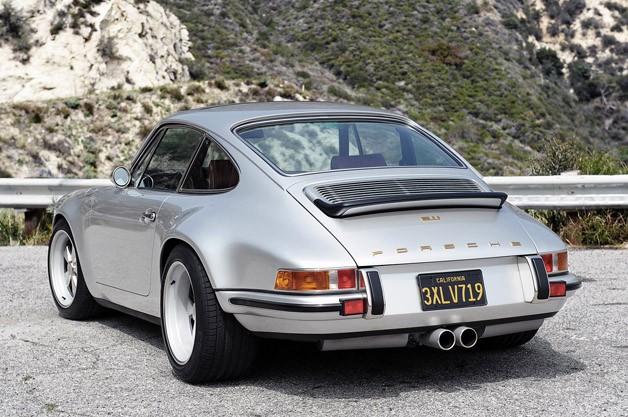
Singer told us that the suspension on the silver car, customer-adjustable coilover units, still hadn't been fine tuned for delivery. After the first few significant dips in the road, the explanation was unnecessary. Damping was off and the car bounded awkwardly in response to undulations in the driving surface. Mazen didn't seem to care, as he pointed the long nose of the sports car towards Little Tujunga Canyon.
That is what this brilliant machine is all about. Rob Dickinson, like many of us, had a dream. But unlike the masses, he has been able to execute his vision magnificently through meticulous restorations of classic Porsche 911s. Iconic in shape, yet updated with thoroughly modern mechanisms, the retro-cool package is hard to fault. We can't wait to drive one.
We first placed our hands on Singer's "reimagined Porsche 911" nearly three years ago when it made its world debut at the Pebble Beach Concours d'Elegance. Shortly thereafter, we caught up with the company's orange prototype for a photo shoot in the Los Angeles basin. While we were both intrigued and impressed with the sports car at the time, full disclosure admits that we were very skeptical about the start-up back in September 2009. Sadly, we've watched this industry shatter far too many dreams.
But Singer has prospered. Very well, it appears.
Rob Dickinson, the creative genius behind the vision, recently invited Autoblog to Singer's headquarters in Southern California's San Fernando Valley for an extended ride in the company's latest offering. After a detailed tour of the facility where we saw other vehicles in production, we dropped into the passenger seat to see what the "Porsche 911 restored by Singer" was all about – only bummed as it was a customer car, meaning we still weren't allowed behind the wheel.



Early Singer prototypes were based on '80s-era long-wheelbase 911-series donor vehicles. Out back was a rear-mounted 3.82-liter air-cooled flat-six that provided motivation. It wasn't a poor starting point, but the early chassis (dating back to 1963) is flexible and their torsion beam suspension inarguably archaic. Today, Singer uses a slightly more modern Porsche 911 "964-series" platform (1990-1994). Not only is it more rigid, but the platform was engineered with coil-over suspension, power steering and ABS brakes right from the factory.This striking silver example is a sold customer car – all Singer restorations are built-to-order.
As mentioned, the striking silver vehicle in the pictures is a sold customer car – all Singer restorations are built-to-order. This particular VIN, a 964-series, was stripped and media blasted down to bare metal before being reinforced and strengthened for its next life. The front decklid latch was moved forward, to accept a classic long hood, and the wipers were relocated to their central location on a 993-series (1995-1998) Porsche. The tub was then treated for rust prevention before being primed and meticulously painted (photos don't do it justice).




The passenger cabin is retro-styled to recall the interiors of the 60s and 70s and built completely to customer specifications. This particular vehicle had power-operated low-back Recaro bucket seats with red "leatherweave" upholstery. According to Singer, "this technique blends many thin strands of leather into a beautiful tapestry, which reimagines the basketweave vinyl interiors of the period in an updated and luxurious fashion." Porsche used a very similar technique on its limited-edition and very retro 2010 911 Sport Classic. It looks rich and feels stunning to the touch.
Other interior components are covered in the customer's choice of high-grade leather – basketweave, perforated, smooth or diamond quilted. These areas include the sun visors, upper and lower dashboard, door panels and luggage shelf. Some customers even opt for diamond-quilted leather upholstery in the forward luggage compartment, but the owner of this silver car chose durable German weave carpet in matching red. The headliner is perforated vinyl, as would be expected from the factory. The steering wheel is a classic thin-rim three-spoke (380 mm diameter), wrapped in black leather. Customers choose their own audio and infotainment options.




All original switchgear and electronics are new or have been completely disassembled and restored to exceed factory specifications; whether it is the HVAC system (with air conditioning), instrument cluster or even minor components such as the ignition switch. When replacement parts are unavailable or not up to the company's specifications, the team makes new ones - they are generally better than the factory delivered (take a look at the CNC-milled hood struts and strut brace, cut from aluminum and then plated in nickel, as two examples).
Factory 911s had steel body panels, but Singer replaces the front fenders, front bumpers, hood, rear fenders, rear decklid and roof in lightweight carbon fiber (the doors are fitted with impact safety beams, and their skins remain steel). The front splitter is flexible urethane, while the rear "ducktail" spoiler is electrically actuated to rise into place at speeds above 60 miles per hour. The dim halogen headlights have also been replaced with custom-fit HIDs in stock buckets.Singer replaces the front fenders, front bumpers, hood, rear fenders, rear decklid and roof in lightweight carbon fiber.
Under the skin, standard Singer restorations are fitted with adjustable Bilstein PSS10 dampers, but this customer specified slightly different KW coilovers from KW automotive GmbH. The massive front multi-piston brakes with drilled rotors are stolen from a race-ready Porsche 993 RS, while the rears come from a standard 993 series. ABS is standard, but late-model stability control is not offered. The wheels are period-correct three-piece 17-inch Fuchs wrapped in 225/45-17 tires in the front and 275/40-17 rubber in the rear.



The engine is a work of art. Hand-built by the renowned engine experts at Cosworth, the perfectly balanced 3.8-liter air-cooled flat-six features the intake plenum from a late-model GT3 while the high-flow emissions-legal exhaust exits out the rear via twin center-mounted pipes. Spinning to a redline of 7,200 rpm, the engine is rated at 375 horsepower and 290 pound-feet of torque (burning California's 91 octane premium unleaded fuel). The standard transmission is a classic "G50" five-speed manual, but the owner of the silver and red coupe chose a six-speed manual lifted from a 993-series. Even though Porsche introduced all-wheel drive with the 964 chassis, all of Singer's restorations are rear-wheel drive.The "standard" car is about $255,000, but bespoke options will likely raise the price higher.
The "standard" car is about $255,000 (the company doesn't consider any of its builds "entry-level"), but bespoke options will likely raise the price higher – Singer can do just about anything.




Even though the company has delivered customer cars, they still don't have any standing inventory. Each car is made-to-order and the spectacular silver car in the pictures (our "test ride" vehicle) is awaiting customer delivery. While our insurance will cover the loss, Singer's trickling production schedule didn't want to take a risk – we were relegated to being passengers. Behind the wheel was Mazen Fawaz, an accomplished driver and Singer customer (who also happens to be the driver in this viral video).
The leather Recaro seats with a period-correct appearance are much more comfortable than they look. Mostly supportive to the back and thighs, they don't envelope the shoulder and back as well as today's best sport buckets but are good for a long haul. All of the other touch points, from the doors to the dash, are all classic Porsche 911 (ergonomics hadn't yet become a science).



With a twist of the metal key located on the left of the dash, the Costworth-built flat-six spun to life with a soothing but raspy idle. The engine spun with flawless mechanical precision, while the race-tuned exhaust burbled with an aggressively mellow note. Overall, the head-turning sound was aggressive and eager.
Stuck in the right seat, there wasn't much to take in with regards to clutch uptake or shift feel, but Mazen pulled us into traffic seamlessly. We kept a discreet eye on his feet for tell-tale signs of awkward pedal movement, yet all control inputs were smooth and buttery.
Acceleration was expectedly quick, logically considering the power-to-weight ratio. Naturally aspirated engines, like those in the Singer, don't deliver instantaneous torque at the bottom end. Instead, they prefer to spin around the tachometer with an ever increasing power output until rapidly falling off before redline. The flat-six behind our backs spun old-school style. With the throttle firmly pinned, the wave of torque grew exponentially as the engine climbed towards 7,000 rpm. Shifting to the next gear was only necessary to preserve the valve train, not seek more power.

We didn't expect the Singer to pull as strongly as today's turbocharged exotics, and it didn't. Our very unscientific "butt dyno" says it should run to the 60 mph benchmark in the four-second range, which is quicker than any Porsche of the early era and plenty fast to plaster a big grin on even a cynic's face.Our very unscientific "butt dyno" says it should run to 60 mph in the four-second range.
Singer told us that the suspension on the silver car, customer-adjustable coilover units, still hadn't been fine tuned for delivery. After the first few significant dips in the road, the explanation was unnecessary. Damping was off and the car bounded awkwardly in response to undulations in the driving surface. Mazen didn't seem to care, as he pointed the long nose of the sports car towards Little Tujunga Canyon.
The nearly abandoned curvy two-lane road (the testing site for our three-car sports coupe comparison) afforded us the opportunity to really hear the Singer ... well, sing. The high walls of the canyon became nature's amphitheater and the Porsche was the headline act. With the Cosworth flat-six at full boil, the stereophonic symphony flowing into the open windows was spellbinding. For the first time in many years, I enjoyed absorbing the scene from the right seat – who knew it could be this good for a passenger?For the first time in many years, I enjoyed absorbing the scene from the right seat.
That is what this brilliant machine is all about. Rob Dickinson, like many of us, had a dream. But unlike the masses, he has been able to execute his vision magnificently through meticulous restorations of classic Porsche 911s. Iconic in shape, yet updated with thoroughly modern mechanisms, the retro-cool package is hard to fault. We can't wait to drive one.
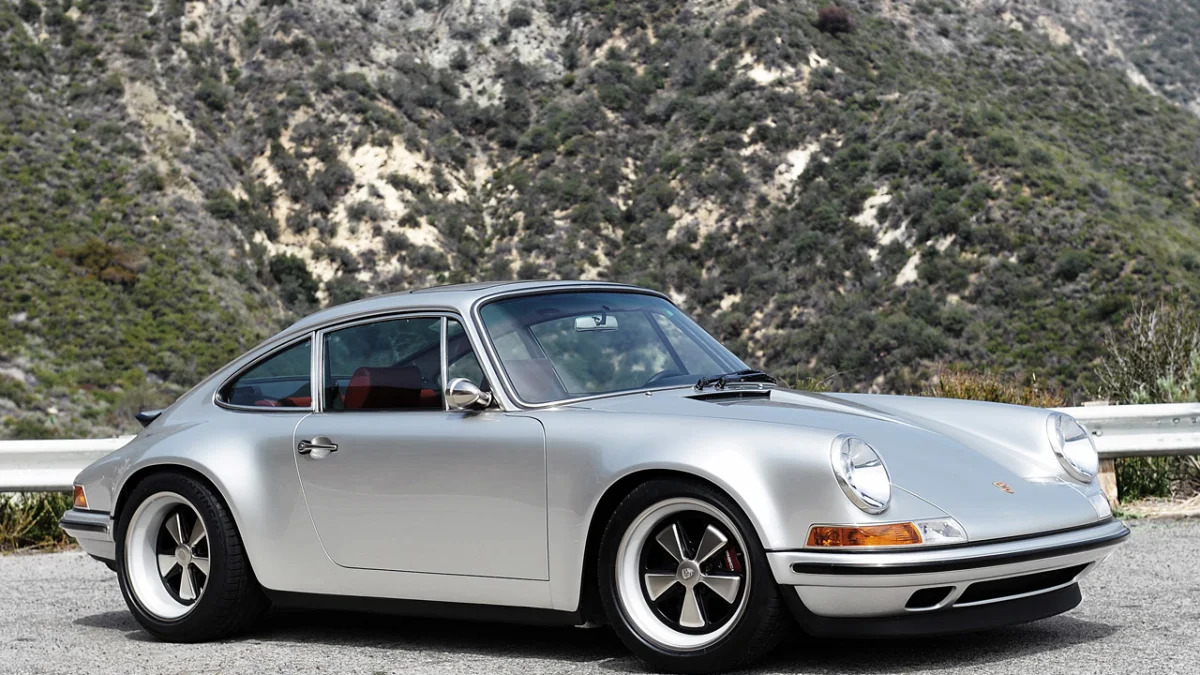









Sign in to post
Please sign in to leave a comment.
Continue